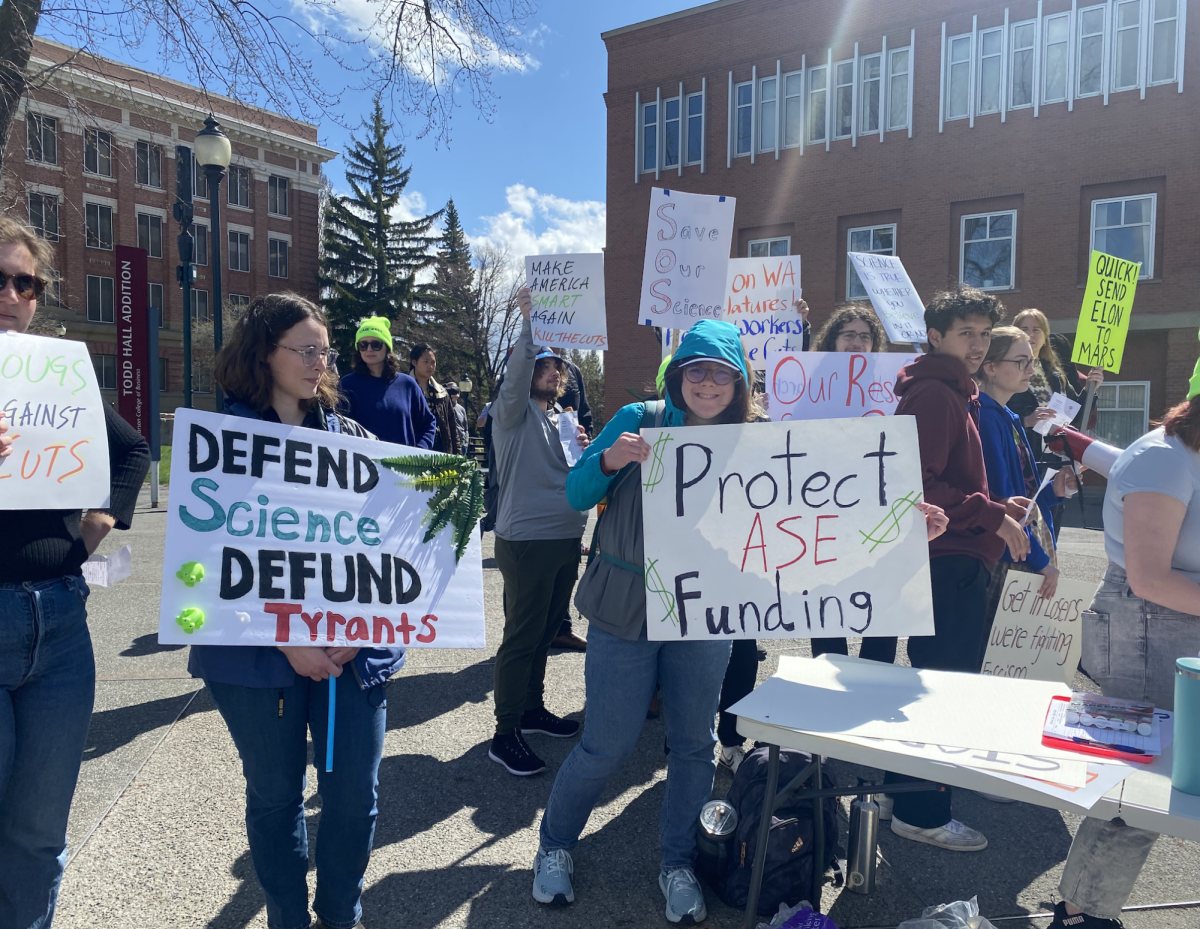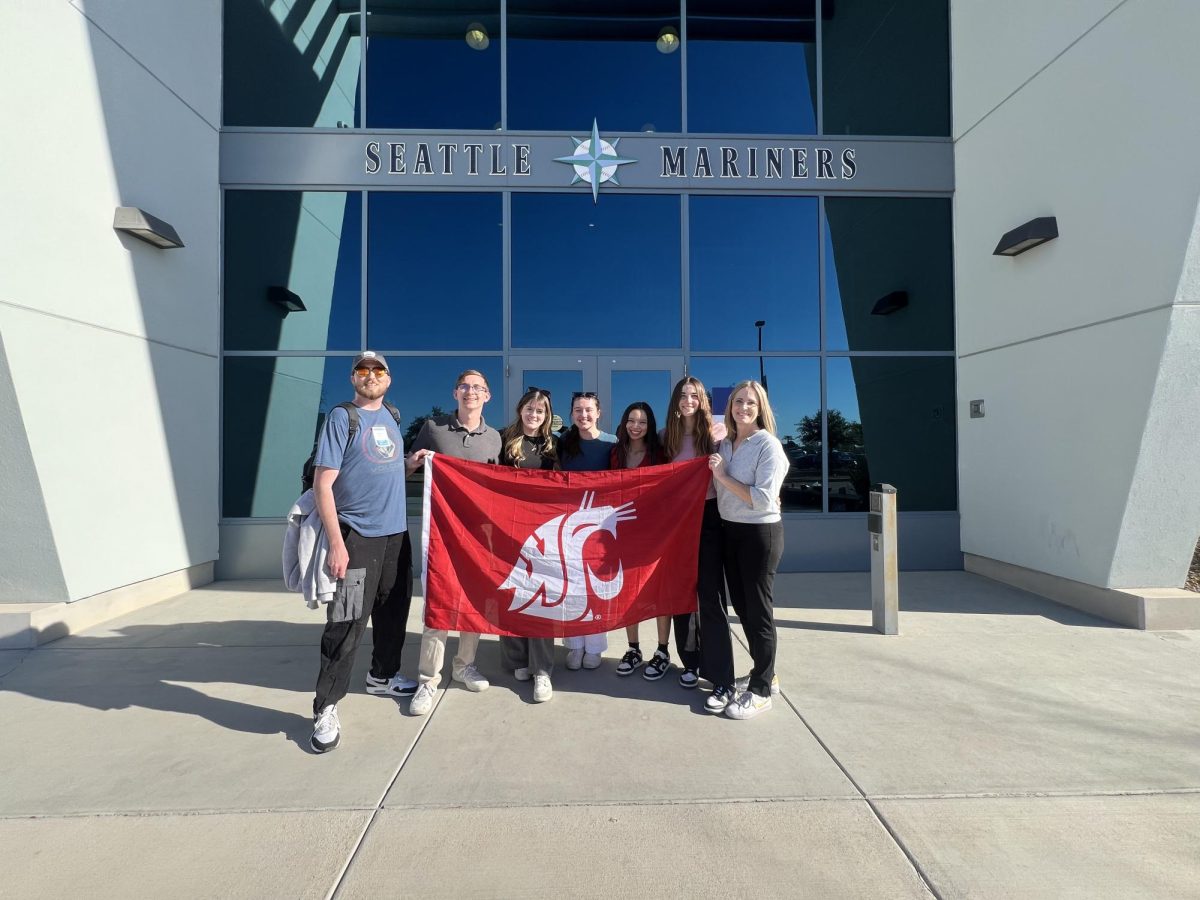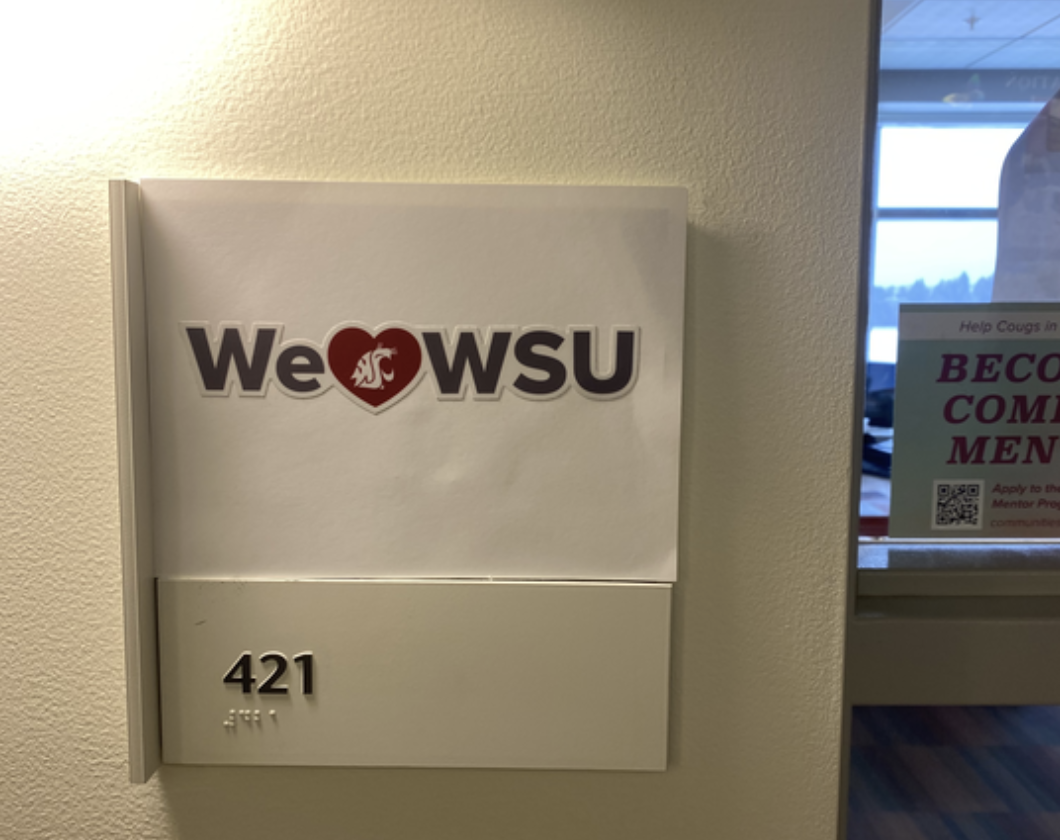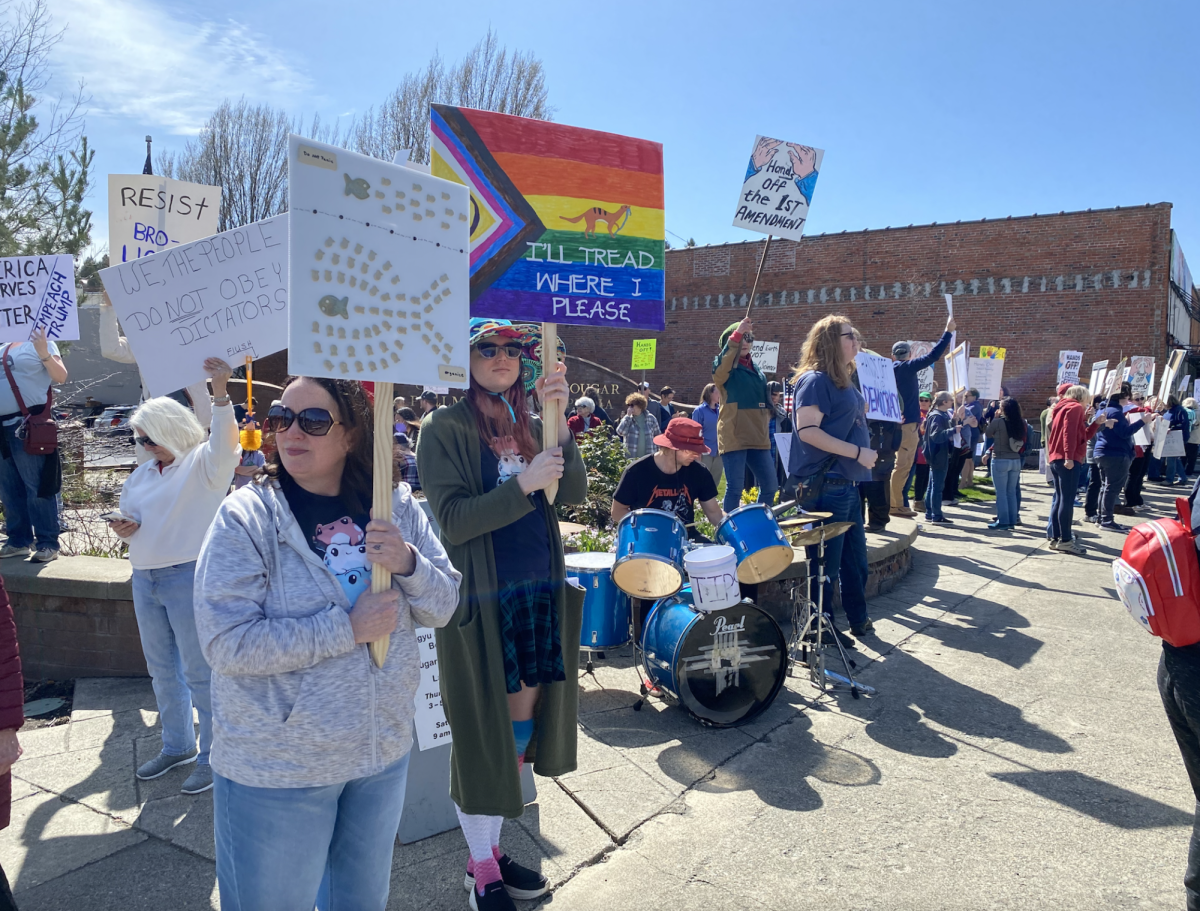A group of 60 students and faculty gathered at Terrell Mall Tuesday to protest research cuts at the state and federal levels.
The rally was organized by UAW 4591, the union chapter representing WSU student employees, which has organized several marches and rallies since Trump’s inauguration in January.
Shae Ortega, a PhD student, encouraged community members to continue protesting the research cuts.
“Everything that got us here, all the hard work, the blood, the sweat, the tears of the hours spent in a lab. Now we’re here, fighting to continue doing that?” Ortega said. “We have to show them we have numbers, we have knowledge, we have education, we have to fight back non-violently,”
Bronwyn Valentine, a sociology graduate student, who joined the student union in August 2024, said the union has been more active since Trump’s inauguration.
“We have definitely been prompted to be more active since the inauguration. I think a lot of us were feeling really helpless with the situation,” Valentine said. “Being a part of our union has allowed us to exercise that agency.”
McKinley Nevins, a steward for UAW 4591, said the union membership has grown since Trump’s inauguration.
“We are in a strong membership push right now,” Nevins said. “One of our main pitches is that one of the best ways that we can protect ourselves and protect each other right now is to be a union member.”
WSU is facing a 3% state budget reduction amounting to $21.6 million over two years, along with a plethora of federal research grant freezes, according to WSU. University departments are preparing for potential 1%, 3%, 5% and 10% cuts in response.
President Elizabeth Cantwell and other WSU administrators sent a letter to faculty and staff last month that announced spending freezes across WSU, while affirming WSU’s commitment to research.
“We know that these tactics are not necessarily a long-term solution. What we had in the past is not necessarily our future,” the letter said. “Let us reiterate that we are committed to WSU remaining a strong R1 institution with a complement of undergraduate and graduate degree programs that serve our historic land-grant mission.”









